Access Free VA Claims Assistance

Free Cancer Guide for Veterans

Find a Top Mesothelioma Doctor

Asbestos exposure in military branches has been a problem for all U.S. armed forces, which heavily relied on asbestos during World War II and the wars in Korea and Vietnam. Military asbestos exposure has caused thousands of veterans to develop lung cancer or mesothelioma after retirement.
For much of the 20th century, asbestos products were common in the U.S. military because of their ability to insulate and fireproof. Every branch of the armed forces used asbestos to build ships, tanks, trucks, aircraft, barracks and other buildings.
The military purchased asbestos products from manufacturers who withheld information about asbestos. This put service members who handled asbestos products and lived in insulated quarters at risk.
As a result, thousands of American veterans have developed asbestos-related diseases. Many veterans, including those with mesothelioma, are eligible to file an asbestos VA claim to receive compensation and health care benefits.
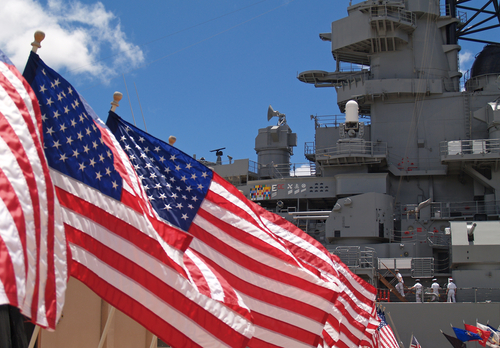
The U.S. Navy covered its ships from bow to stern with asbestos products. Navy veterans today are paying the price for those manufacturing decisions.
Nearly one-third of people who file mesothelioma lawsuits are veterans, and a majority of those have a Navy service record.
The worst areas for exposure were below-deck compartments. Boiler rooms, engine rooms, ammunition storage rooms, and even mess halls and sleeping quarters had asbestos.
In August 2020, a study published in the International Journal of Radiation Biology analyzed the cause of death for military personnel who participated in nuclear weapons tests from 1945 to 1962. While no illnesses were attributed to radiation exposure, a high risk of mesothelioma was observed among those who served on Navy ships.
A study from 2019 found that Navy personnel were more likely to die from mesothelioma than people in any other branch of the military. Certain job categories had the highest potential for asbestos exposure. They included machinist mates, boiler technicians, water tenders and pipefitters.
Access Free VA Claims Assistance

Free Cancer Guide for Veterans

Find a Top Mesothelioma Doctor

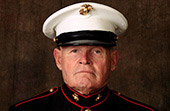
Marines got exposed in the vehicles, airplanes and boats that took them to fight. The places where they lived and practiced could be risky too.
Marines who worked as mechanics or repairmen may not have known it, but they were working with materials that contained asbestos. This type of asbestos would release dust into the air which could be harmful to breathe in.
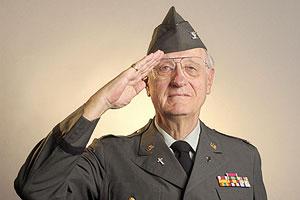
Army veterans were exposed to asbestos in buildings decades after construction ended.
Members of the U.S. Army were exposed to asbestos fibers in many places during the 1900s, including where they ate, slept and worked. Asbestos was used in pipes and materials like flooring, roofing and cement.
By the late 1970s, they stopped using asbestos in new buildings. However, it is still found in Army bases many years later. In fact, it was one of the biggest problems at 32 Army bases that were closed or changed during the end of the century. This caused them to have to spend $1 billion cleaning up the environment.
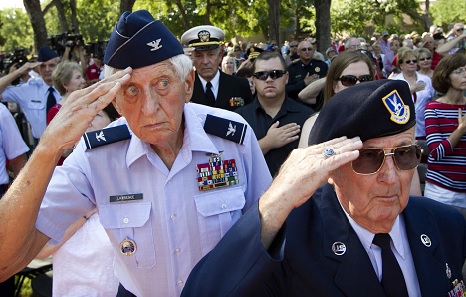
The U.S. Air Force used asbestos in planes, radar stations and bases where men and women were stationed. Asbestos made an ideal insulating material in aircraft. The cockpit needed heat protection. Asbestos was found in heat shields and durable valves, gaskets, electrical wiring and brakes.
Air Force mechanics and pilots faced danger when they worked on or flew in planes. Pilots who flew the aircraft were vulnerable, too, when sitting in a cockpit with an asbestos coating.
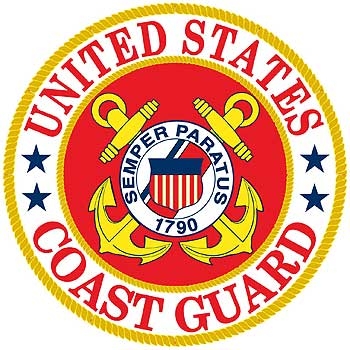
Members of the U.S. Coast Guard were often exposed to asbestos on ships. All areas surrounding the engine and boiler rooms were insulated with asbestos. The ropes used throughout ships were woven with asbestos fibers. Many sections of ships were coated with asbestos insulation and fireproofing.
The Coast Guard, like all branches of the military, has been diligent in recent years in protecting its members. It isn’t just the ships where asbestos has threatened members of the Coast Guard. Asbestos endangers them in housing structures and buildings around Coast Guard bases. Members now must sign a Disclosure of Environmental Health Hazards in Coast Guard Housing contracts. This happens if they are moving into any structure built before 1981.
Although asbestos use has ended in the military, the long latency period of mesothelioma still leaves many at risk. It can take anywhere from 20 to 60 years after exposure to asbestos fibers for mesothelioma symptoms to appear.

Learn how to access benefits available to veterans affected by an asbestos-related illness.
Get Help Now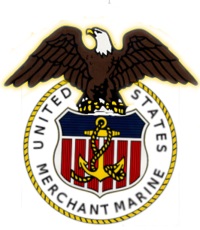
Asbestos products were also used on the noncombat cargo ships of the U.S. Merchant Marine. Numerous studies have documented the harmful effects of asbestos exposure on merchant crewmen and their increased rate of respiratory diseases.
Many merchant mariners worked on Liberty Ships, which carried supplies to areas of battle. These ships contained a lot of asbestos, so it’s too expensive to recycle the metal when they’re out of service.
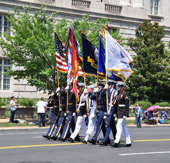
Although the use of asbestos has diminished since the 1980s, many of the places where national guardsmen serve still have old asbestos materials, leaving guardsmen exposed to long-term dangers.
In 2009, for example, the Missouri Army National Guard armory in Cape Girardeau underwent a $1.5 million renovation, which revealed asbestos products all throughout a building originally constructed in 1953.
In 1993, the city of Westminster, Maryland spent $15,000 to make sure that an old National Guard armory they had bought was free from asbestos.
National Guard members can be exposed to asbestos when helping out in emergency situations. After Hurricane Katrina hit the Gulf States in 2005, 50,000 troops from the National Guard were sent there to help with rescue missions. This included going into homes and buildings that had been damaged by the storm and may have contained asbestos.
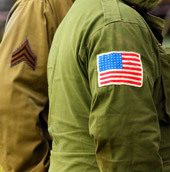
There are no records available that can accurately count the number of World War II veterans who have died of asbestos-related diseases such as mesothelioma. Yet no generation of war heroes was more vulnerable to the ravages of this toxic mineral.
Asbestos products were considered ideal for ships and submarines by Navy leaders — except the surgeon general of the Navy, who reported his concerns over the health hazards of asbestos in 1939. Unfortunately, his warnings were ignored, and the Army, Air Force and Marines all followed the Navy’s lead.
Even before America entered World War II, asbestos was classified by government officials as a critical material. Worldwide demand for the product was outpacing the supply and causing shortages that alarmed military leaders early in the war.
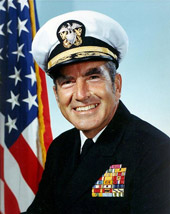
Decorated Navy Admiral Elmo Zumwalt died of mesothelioma, the rare cancer caused by asbestos. Zumwalt was a career officer who served in World War II and later became the youngest man in American history to serve as United States Chief of Naval Operations.
Exposure to asbestos early in Zumwalt’s Navy career likely caused the disease that killed him at age 80 in January 2000.
Frank Curre of Waco, Texas, died in 2011. The Navy veteran survived the attack on Pearl Harbor but died from mesothelioma on the 70th anniversary of the bombing in Hawaii that pulled America into the war.
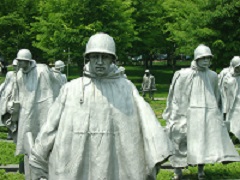
During the Korean War, asbestos was used in virtually every mode of transportation: Ships, tanks, aircraft, jeeps and trucks. More than 300 products or parts on ships built during the Korean and Vietnam War eras contained asbestos.
Jeff Burdine, a Navy veteran from Salem, Ohio, served two years aboard the USS Neosho during the Korean War. He was diagnosed with asbestosis in 2012, according to the News Herald of Port Clinton.
One of his regular jobs was cleaning steam pipes wrapped in asbestos insulation. Because his post-Navy working career never involved asbestos, he believed the Navy was his only source of exposure, which made him eligible for compensation from the U.S. Department of Veterans Affairs.
The Korean War Educator includes a memoir section that details the asbestos exposure and mesothelioma diagnosis of Navy veteran Allen Johnson from Smithville, Utah. He served aboard the USS Randall, working in an engine room laced with asbestos dust.
In 2004, in compensation for his mesothelioma diagnosis caused by that asbestos exposure, he began receiving a monthly check of $894. He was grateful for it, but it was hardly enough for a shortened lifespan that stemmed from serving his country.

In addition to VA benefits, veterans with mesothelioma may be eligible for trust funds, grants and legal claims.
See if You Qualify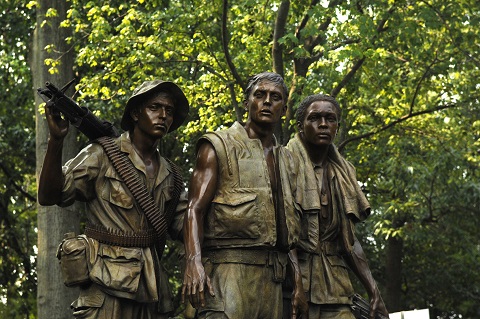
According to the U.S. Geological Survey, America averaged an annual consumption of more than 700,000 tons of asbestos from 1964 to 1975, the latter years of the Vietnam War. The all-time high was 803,000 tons in 1973.
During the Vietnam era, as in the two wars before, asbestos was used in virtually all forms of military transportation, including tanks, aircraft, jeeps, trucks and ships.
“We had no idea [about asbestos then], no one did,” said Marine Corps veteran David Cutts of New Jersey, who was diagnosed with mesothelioma in 2005, almost 40 years after returning from his six months in Vietnam. He believes his asbestos exposure occurred on a Navy ship used to transport troops.
Hamilton Jordan, who was the White House Chief of Staff for Jimmy Carter, died of mesothelioma in 2008. He also attributed it to asbestos exposure from his military service during the Vietnam War.
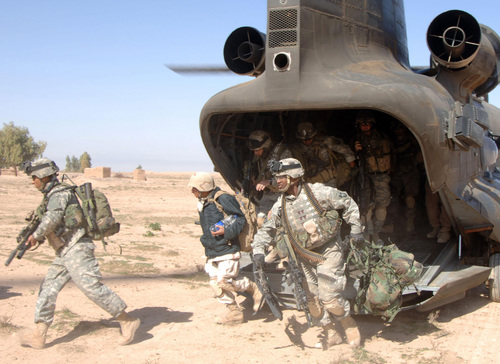
While asbestos use in the U.S. military dropped significantly after the Vietnam era, the asbestos industry has boomed in Iraq, Afghanistan and other war-torn countries. These nations continue to use asbestos to rebuild infrastructure as economically as possible.
The ongoing unregulated use of asbestos poses serious long-term health risks to the residents of the Middle East and U.S. military members deployed there.
Military operations have disturbed asbestos-containing materials in older buildings in Iraq and Afghanistan, sending toxic fibers into the fierce desert winds that spread the contamination for miles.
In addition, Afghanistan receives considerable amounts of asbestos from nearby Kazakhstan, one of the world’s biggest exporters of asbestos.
The International Ban Asbestos Secretariat said in a report that “an increase in demand for asbestos-containing building products to rebuild Afghanistan has led to increased local production.” In addition, it reported little awareness by Afghan residents about the long-term health risks of handling asbestos.
In 2009, liability lawsuits in nine states were filed against Kellogg, Brown and Root, an American construction company operating in Iraq and Afghanistan. KBR was accused of creating open-air burn pits that released asbestos and other toxic chemicals into the air, putting U.S. service members at risk.
Recommended ReadingYour web browser is no longer supported by Microsoft. Update your browser for more security, speed and compatibility.
If you are looking for mesothelioma support, please contact our Patient Advocates at (855) 404-4592
The Mesothelioma Center at Asbestos.com has provided patients and their loved ones the most updated and reliable information on mesothelioma and asbestos exposure since 2006.
Our team of Patient Advocates includes a medical doctor, a registered nurse, health services administrators, veterans, VA-accredited Claims Agents, an oncology patient navigator and hospice care expert. Their combined expertise means we help any mesothelioma patient or loved one through every step of their cancer journey.
More than 30 contributors, including mesothelioma doctors, survivors, health care professionals and other experts, have peer-reviewed our website and written unique research-driven articles to ensure you get the highest-quality medical and health information.
My family has only the highest compliment for the assistance and support that we received from The Mesothelioma Center. This is a staff of compassionate and knowledgeable individuals who respect what your family is experiencing and who go the extra mile to make an unfortunate diagnosis less stressful. Information and assistance were provided by The Mesothelioma Center at no cost to our family.LashawnMesothelioma patient’s daughter


Munz, A. (2024, October 31). Asbestos Exposure in Military Branches & Wars. Asbestos.com. Retrieved November 25, 2025, from https://www.asbestos.com/veterans/military-branches/
Munz, Aaron. "Asbestos Exposure in Military Branches & Wars." Asbestos.com, 31 Oct 2024, https://www.asbestos.com/veterans/military-branches/.
Munz, Aaron. "Asbestos Exposure in Military Branches & Wars." Asbestos.com. Last modified October 31, 2024. https://www.asbestos.com/veterans/military-branches/.
A United States military veteran with knowledge of asbestos exposure reviewed the content on this page to ensure it meets current standards and accuracy.
Retired Culinary Specialist and Senior Chief Nathan Pinner uses his extensive naval leadership, including service at the White House, to better serve other veterans.
Our fact-checking process begins with a thorough review of all sources to ensure they are high quality. Then we cross-check the facts with original medical or scientific reports published by those sources, or we validate the facts with reputable news organizations, medical and scientific experts and other health experts. Each page includes all sources for full transparency.
Please read our editorial guidelines to learn more about our content creation and review process.
